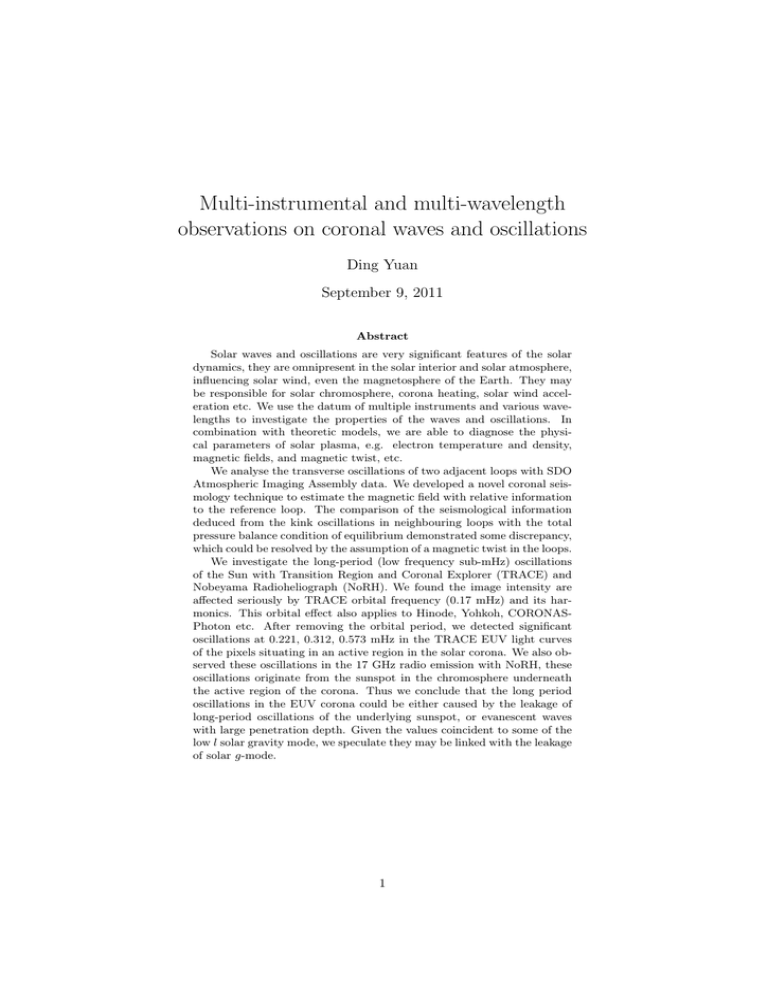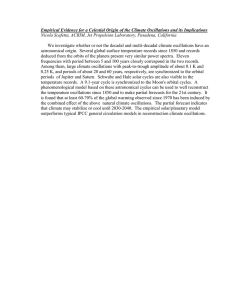Multi-instrumental and multi-wavelength observations on coronal waves and oscillations Ding Yuan
advertisement

Multi-instrumental and multi-wavelength observations on coronal waves and oscillations Ding Yuan September 9, 2011 Abstract Solar waves and oscillations are very significant features of the solar dynamics, they are omnipresent in the solar interior and solar atmosphere, influencing solar wind, even the magnetosphere of the Earth. They may be responsible for solar chromosphere, corona heating, solar wind acceleration etc. We use the datum of multiple instruments and various wavelengths to investigate the properties of the waves and oscillations. In combination with theoretic models, we are able to diagnose the physical parameters of solar plasma, e.g. electron temperature and density, magnetic fields, and magnetic twist, etc. We analyse the transverse oscillations of two adjacent loops with SDO Atmospheric Imaging Assembly data. We developed a novel coronal seismology technique to estimate the magnetic field with relative information to the reference loop. The comparison of the seismological information deduced from the kink oscillations in neighbouring loops with the total pressure balance condition of equilibrium demonstrated some discrepancy, which could be resolved by the assumption of a magnetic twist in the loops. We investigate the long-period (low frequency sub-mHz) oscillations of the Sun with Transition Region and Coronal Explorer (TRACE) and Nobeyama Radioheliograph (NoRH). We found the image intensity are affected seriously by TRACE orbital frequency (0.17 mHz) and its harmonics. This orbital effect also applies to Hinode, Yohkoh, CORONASPhoton etc. After removing the orbital period, we detected significant oscillations at 0.221, 0.312, 0.573 mHz in the TRACE EUV light curves of the pixels situating in an active region in the solar corona. We also observed these oscillations in the 17 GHz radio emission with NoRH, these oscillations originate from the sunspot in the chromosphere underneath the active region of the corona. Thus we conclude that the long period oscillations in the EUV corona could be either caused by the leakage of long-period oscillations of the underlying sunspot, or evanescent waves with large penetration depth. Given the values coincident to some of the low l solar gravity mode, we speculate they may be linked with the leakage of solar g-mode. 1


